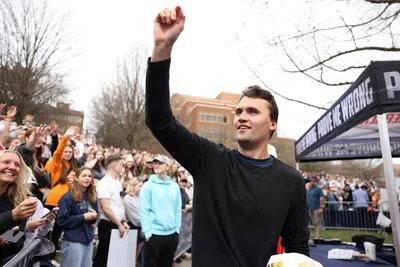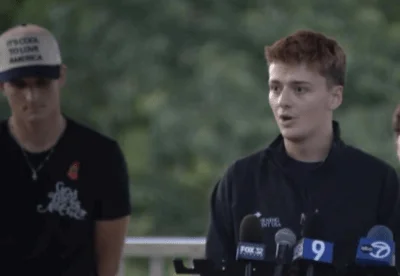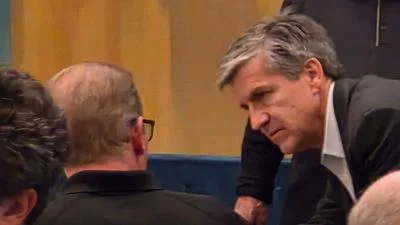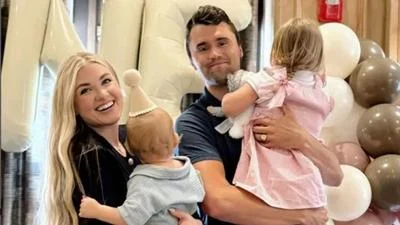Village of Arlington Heights Committee-of-the-Whole Minutes March 13, 2017 met Monday, March 13.
na
I. CALL TO ORDER
II. PLEDGE OF ALLEGIANCE
III.ROLL CALL
President Hayes and the following Trustees Responded to roll; Scaletta,
Sidor, Blackwood, LaBedz, Glasgow, Tinaglia and Rosenberg.
Trustee Farwell was absent.
Also present were: Randy Recklaus, Charles Perkins, Scott Shirley, Jim
Massarelli, Mary Ellen Juarez and Becky Hume
IV. NEW BUSINESS
A. Proposed Stormwater Action Plan and Analysis
Mr. Recklaus outlined the proposed plan for recommended concepts based on
last year’s study results from CDM Smith and Burke. Staff will continue to
refine the plan after this discussion. The potential improvements are not
designed to provide protection from a 2011 sized event. If such an event
were to occur again, it is likely that flooding would be experienced even if all
of the identified improvements were completed. Since 2011, the system has
performed well overall. Staff has developed recommendations based on the
principles and direction provided by Village Board in August.
1. Prioritization: Given that all improvements cannot be done at the same
time, the priorities are to reduce the incidence of structure flooding and
reduce the incidence of street flooding of one foot or greater. This level
of water in the streets makes it difficult for emergency vehicles to
respond and increases the chances of structure flooding.
2. Funding Mechanism: use of a flat or categorized storm water utility fee
(SUF).
3. Overhead Sewer (OHS) Program Enhancements: the use of overhead
sewers is the most cost effective and robust way to reduce structure
flooding in the Combined Sewer (CSTA) area.
The total cost of the new public improvements identified is $38,429,000. If
the OHS installation/relief sewer option was implemented in the CSTA and if
construction costs were shared with the road program, the total project costs
could be reduced to $33,413,000.
Costs will likely be lower as many residents will not participate in the OHS.
They may not participate because they don’t think they need it, they don’t
have the money, or the home has been replaced with one that has an OHS.
Mr. Recklaus walked through the estimated costs presented on Exhibit 1.
Because of cost constraints, all the improvements cannot be done at one
time.
Mr. Shirley presented the order of priority of the projects.
1. Provide immediate protection to the CSTA area residents through OHS
enhancements. This would provide these homes with 10 year flood level
protection.
2. In the Separate Sewer Ares, the goal is to reduce overland flooding in
the following locations: Cypress, Greenbrier/Roanoke/Wilke, Campbell
& Sigwalt, West Hintz, Race & Chicago, University Drive,
Roosevelt/Cleveland, Burr Oak & Dryden.
Staff looked at the benefit to cost ratio by looking at the following benefits
for each flooding area: Criticality of flooding, frequency of flooding and
overall infrastructure condition.
Mr. Massarelli said OHS is a private property improvement, so homeowners
must assume some financial responsibility. Homes that have the OHS have
shown it to be the best solution to flooding. Older homes will continue to be
at risk in future events. Today’s program of reimbursing up to $7,500 is not
sufficient incentive for many people as only 180 homeowners have taken
part. The average overhead sewer installation cost is $12,000. Most of the
flooding in 2011 was basement back up. To increase participation, staff
proposed to enhance the program in one of the following ways:
1. Lesser of 75% reimbursement up to $11,250
2. Lesser of 75% reimbursement up to $11,250, plus 5 year 0% loan for
resident portion.
Mr. Massarelli described how sewer flooding in homes occurs and how
overhead sewers work to solve this flooding. OHS systems supplemented by
a smaller amount of relief sewers will provide a higher level of service than if
all the large relief sewer projects discussed in the CDM Smith report were
completed.
Mr. Recklaus said the Village has spent $56,000,000 on storm water efforts
over the years (not adjusting for inflation). The Village’s Storm Water Control
Fund has received money transfers in from other funds, but has no dedicated
source of revenue. The Village needs to identify a sustainable revenue source
for this fund to ensure the Storm Sewer Rehabilitation and the Neighborhood
Drainage Improvement programs continue.
Based on Board direction from August, the ongoing storm water control
programs should be funded by a Storm Water Utility Fee (SUF), see exhibit
2. If new projects are to be undertaken, more funding needs to be
developed. This could come through an increased SUF, the issuance of
General Revenue Bonds or the combination of the two. Bonds could be
created upon the retirement of debt in 2020 and beyond. This would keep
property taxes at their current level and would generate enough to pay for
projects that would not be covered by SUF revenue.
Mr. Massarelli said grants will be actively pursued. Grants come with caveats,
and the Village may not be able to comply. In addition, grant funding may
not be available. Staff is not assuming that grant funding will be available,
but it should be vigorously pursued. The appropriate time to pursue grants is
during the design phase for each project. Engineering design firms generally
have close relationship with State and Federal agencies that issue grants, and
will generally be aware of which grants are active during a given period.
Mr. Recklaus said staff believes the following courses of action should be
pursued:
1. Aggressive pursuit of grant funding.
2. Establishment of a new storm water management fee of $6.25 per
month per single family residential properties with a yet to be
established but somewhat larger fee for multi-family, commercial and
not for profit properties. Based on the priority ranking completed, the
projects to be funded initially would include: Enhancement to OHS
program, Construction of the Cypress Area Improvement, Construction
of Relief Sewer for CDM Smith Area 4 (Campbell, Sigwalt, and Vail),
Construction of improvements in Burke Study Area D
(Greenbrier/Roanoke/Wilke)
3. Hold off on making a decision on future property tax revenues for
additional storm water project funding at this time.There could be large
changes in potential revenue based on the State Budget situation.This
would keep the Village’s options open.
4. Increase OHS incentive. Change it to a 75% reimbursement of up to
$11,250. Limit expanded flooding incentive to 400 homes.
Trustee Glasgow asked where the money came from for the existing Storm
Water Fund. Mr. Recklaus said it came from a variety of sources. Since 2014
it has come from transfers from the General Fund. In 2017, money will be
transferred in from the closing EAB Fund. Trustee Glasgow asked for
clarification of the $6.25 per month versus the $3.25 per month SUF
proposal. Mr. Recklaus said a $3.25 fee will only keep up with what exists
today. An additional $3 per month would pay for the OHS expansion and the
phase one improvements. Trustee Glasgow expressed concern on relying on
people putting in an overhead sewer. He said he couldn’t see how this could
be mandated. He asked what the numbers would look like if not enough
people participate.
Mr. Recklaus said overhead sewers are mandated for new construction. If not
enough people participate in the OHS expansion, there will be extra money
in the Storm Water Utility Fund. That money could be used for other physical
improvements or the Village could increase the OHS incentive funding.
Trustee Glasgow said he was concerned that a lot of people just won’t want
to do it. Mr. Papierniak said there are 800 homes that have or could take on
water shown in the model. There are more homes in the combined sewer
area.
Trustee Glasgow asked if grants are in the assumptions. Mr. Massarelli said
no. If grants become available, other projects can be brought forward.
Trustee Glasgow asked if GOB bonds were not used, would the Village be
able to fund all the projects. Mr. Recklaus said no, there is not enough
revenue and there are no other funding mechanisms. Trustee Glasgow said
he thinks GOB monies may be needed for something else.
Trustee Rosenberg asked if in Exhibit 4 the 2018 budget shows $10,000,000
from a GO bond. Mr. Recklaus said the $10 million would be from a Revenue
Bond and the debt service would be included in the $6.25. The $10 million
bond is part of the $6.25 financing plan. It would not be a maturing bond
that would impact taxes. The first $3.25 pays for neighborhood drainage and
storm water rehabilitation, the next $3.00 pays off the bond.
Trustee Rosenberg noted that in the OHS area, three areas don’t impact
sewer cost. Mr. Recklaus said those three areas only have an overhead sewer
component, no relief sewer large or small would be needed. Trustee
Rosenberg asked if none of the homes put in OHS, what would be the
additional cost to the Village for installation of bigger sewers. Mr. Shirley
said in the areas where there is a smaller relief sewer it’s the cost differential
between the smaller/larger relief sewers. The cost would be $11.4 million
just for the 8 areas in the CSTA. This would not include Burke study areas or
structure flooding areas. Trustee Rosenberg asked if it made sense to put in
large relief sewers where there are fewer affected homes. Mr. Shirley said it
is more cost effective to put in OHS. Trustee Rosenberg asked about resident
education. Mr. Recklaus said nothing has been done to date since the
program may change. Once the Board makes a decision, then it would be
appropriate. Trustee Rosenberg said it was his inclination to leave it where it
is and explain the merits to the residents.
Trustee Scaletta said he liked the methodology to prioritize how this is to be
addressed. He asked if anyone can take advantage of the OHS. Mr. Shirley
said anyone in the combined sewer area can and it increases property values.
Trustee Scaletta said although the recommendation only accounts for a small
amount of homes, many might take advantage of program. Mr. Recklaus said
the assumptions are reasonable. Trustee Scaletta asked if the 798 homes
would be notified directly. Mr. Recklaus said communication hasn’t been
developed yet. If communication is targeted to those homes, would be
something to address. Trustee Scaletta asked about the money in the fund
now. Mr. Recklaus said the money going into the fund is from one time
transfers. Staff wants to establish an ongoing reliable source of funding. The
forecasting does not assume any future random transfers. The EAB funds are
not in this fund yet. Some of the money came from the General Fund, some
from the Capital Fund some will come from EAB. None of it was from a
dedicated part of the tax levy. Mr. Recklaus said there is no tax levy money in
this fund. Trustee Scaletta said as much as he doesn’t want to increase OHS,
he understands the benefits of it and it will save money in the long run. He
said he will support it. He said he feels for the people who have done it
already. He said he understood that the Village has to do something to
engage residents to help us help them.
Trustee LaBedz said she agreed with the OHS and improved public education.
She asked if a gutted home is required to install an OHS? Mr. Massarelli said
teardowns have different levels of remodeling, so he was not sure where this
requirement comes in on a remodel. Trustee LaBedz said if a home is being
flipped, she would like to know. A lot of people won’t do it because they
believe Village should be paying for it. Trustee LaBedz asked what the
Neighborhood Drainage Improvement Program does. Mr. Massarelli said it is
a method for people who are having drainage issues, like a back yard that is
a bowl and water sits for days. The program allows for an extended storm
sewer connection to a location. There is some resident financial involvement.
The program gives options where there aren’t any others. Trustee LaBedz
said she was concerned that there may not be many grants available. She
believes grants are tax money too and is in favor of promoting the OHS.
Trustee Tinaglia asked why the Village wouldn’t consider targeting the 800
homes. Mr. Recklaus said that is a policy decision, not an ethical issue. There
are several thousand that would qualify for OHS, maybe as many as 10,000
properties. If 800 homes participated, it would cost $7.2 Million. The $3.6
Million allows the Village to spread out costs with other sewer needs. Trustee
Tinaglia said he strongly encouraged an educational focus on the 800
homes. He suggested that fees could be assessed to new construction, tear
downs and permits, to help offset the cost in the neighborhood. Mr. Recklaus
said Engineering works with new home plans to minimize their storm water
impact. Larger developments are mandated to have storm water control.
These owners would argue they are impacting community less than before.
Fees can be looked into. Trustee Tinaglia suggested if the cost of a
renovation is beyond 50% of existing home value, that could be a line that to
encourage overhead storm systems to be put in. Trustee Tinaglia said
overhead sewers work only when the power is on and so people need power
back up. He asked beyond the 800 homes, how many homes will have
trouble with street flooding. Mr. Papierniak said about 80 homes are close to
greater than 1 foot of standing water. Mr. Recklaus said in Phase 1 there are
non-combined sewer projects for structure flooding issues. In some areas,
street design is to blame.
Trustee Blackwood asked if there is another energy producing pump driver.
Mr. Shirley said battery backup systems are improved and can now pump
close to what a primary pump does. A natural gas generator is another
option. He recommended an automated transfer switch if you are not home.
A portable generator works, but you have to be home. July 23, 2011 was bad
because everyone was asleep. Battery backups cost between $200 and $300.
Overhead sewers do not stop overland flooding.
Trustee Sidor asked if $12,000 was the average cost for an OHS. Mr.
Massarelli said of the180 installed, the average cost was $12,000 based on
permit submissions. Finished basements will cost more than unfinished
basements. Trustee Sidor asked what other communities have done. Mr.
Papierniak said in Palatine a storm water utility fee of $10 per month was
added and the city bought homes and created detention in neighborhoods.
They also installed an oversized sanitary sewer system. Trustee Sidor said it
will take savvy marketing pieces, not the average mailing or water bill
message to make this successful. He encouraged the Village to consider
outsourcing the communication effort to make sure consumers embrace the
program. He asked about multifamily properties. Mr. Recklaus said on a per
parcel basis, a larger fee could be assessed for larger properties. He said a
lot of larger properties have to maintain their storm water on their premises.
He said staff will look at options for multifamily properties at a later date.
Staff will also look at what neighboring communities have done.
Trustee Sidor asked for the Design Commission to develop a Green Program
for homes to promote holding water back. Mr. Recklaus said that Green
programs are a component of an overall strategy. The now defunct MWRD
Rain barrel program is an example of one of the ways the Village promotes
water retention. Education is important to give people tools to do things on
their own properties. The Village is looking at Green options on its own
Police Station project.
Trustee Tinaglia suggested new homes could be charged a fee for having
down spouts at grade level. Mr. Recklaus said that can be done, but this will
not get the Village out of this situation. Trustee Tinaglia said the Village
should partner with the Library and Park District in obtaining grants. Mr.
Recklaus said one of the challenges is that the Village has to fix things when
they deteriorate, sometimes, it cannot wait for grant money. In this process,
the Village has a little more flexibility.
Mary Jo Warskow of 809 S. Mitchell said she has a lake in her backyard in
heavy rains. She said she had water seepage and back up in 2011. She has
replaced 3 sides of her home, put in new roof and has a daughter in college.
She said she can’t afford $6,000. If it cost $3,700, she would think seriously
about it. There is a perception that these large new homes have displaced all
the water. There is only so much space left. If it is going into the sewers
there is more potential for back up. If you are going to ask people to pay, the
new homes should pay some of the price. She said the Board should
consider the quantity and quality of water. The water that is traveling over
concrete and driveways contains pesticides that are going into water ways.
The more we can let the ground handle it, the better it will all be. She said
she wants to see green infrastructure and policy carried through the process
and communicated through the community.
Marc Adelman of the Westgate Subdivision said the Village should look at the
number of people who took advantage of overhead sewer program before
and after 2011. He said this report looked at the cost effectiveness for the
Village without consideration for residents. The 7 of 8 projects to be handled
early only help a few homes. He questioned $13 million to protect 63 homes.
The cost per homes in the first sections outside combined area is $124,000
to $ 833,000 per home. In the combined area the cost per home is much
lower. People are already at a disadvantage in the combined area, they are
already getting sewage in their homes. In areas where residents get clean
water in their homes it costs more to fix. He asked why the parcel on Euclid
and Wilke can’t be used for retention. He said not to say grants may or may
not be here. The point is that any money you get pushes the expense away
from residents and the Village.
President Hayes said he would love grant money. There is no magic pot of
money that does not come from residents. It comes from the tax payers one
way or the other.
Paul Culhane said Green infrastructure is very important and the Village
should not focus on mistakes of the past and make sure we don’t make
similar mistakes in the future. He said the Village should make requirements
to keep water on the ground and less in the sewers.
Mr. Recklaus introduced questions for Board feedback.
1. Pursue grant funding? President Hayes said it should be aggressively
pursued. It was also recommended that staff should work with other public
bodies in pursing cooperative grants.
2. For the purposes of further planning, does the Board support the
development of new Storm Water fee of $6.25 per month for single family
residential properties, with a larger, yet to be determined fee for larger
properties?
Trustee Rosenberg said he would like to see what other communities
have done, and perhaps seek guidelines from the Northwest Municipal
conference. He asked if these projects would be taken one by one. Mr.
Recklaus said once a funding source is created, these projects would be
plugged into the CIP. The will be looked at based on the prioritization
developed in this memo. If the $6.25 is in place, then that would be
enough to fund the OHS enhancement, Cypress, Campbell & Sigwalt and
Greenbrier/Roanoke/Wilke. The merits of the order can be discussed
further in the CIP process. Trustee Rosenberg said he would like to
reconsider prioritization. Mr. Recklaus said the CIP discussion would be
the appropriate time for that discussion. Trustee Rosenberg asked if
there were any alternatives. Mr. Shirley said these are the most cost
effective options to provide a uniform level of service throughout the
Village. There are no cheaper options for the level we are seeking. Mr.
Recklaus said the Village is planning to limit the OHS program to the
first 400 homes at a cost of $3.6 million. If the $6.25 fee were
introduced, there would be sufficient funding for that.
Trustee Tinaglia said he supports it, but large renovations or teardowns
should be required to put in French drains or detention systems or pay a
price to compensate everyone else. Mr. Recklaus said staff will research
and present this idea as part of the project.
Trustee Glasgow said $6.25 seems prudent. He said he could not
support a bond issue until 2020.
Mr. Recklaus summarized that the Board is in support of continuing
to further plan with the assumption of the $6.25 with some
potential new regulation and fees for new construction. No Trustee
is in opposition of planning with this fee.
3. Is there support for delaying discussions for timing and funding of
projects beyond Phase 1 until the financial climate of the State can be
reassessed prior to the retirement of debt in 2020?
Trustee Scaletta said it is wise to not go too far out considering the
condition of the state.
Trustee Sidor said he would like to see the justification for
prioritization. He asked about Waterman and why it was not looked at in
these studies.
Trustee Rosenberg asked if the $10 million bond was a part of this. Mr.
Recklaus said yes, it was a revenue bond, supported by the storm water
fee revenues. #3 is a GOB, the village is not committing to another GOB
in 2020.
4a. For the purposes of further planning does the Board support the
proposed OHS incentive plan 75% up to $11,250 of up to 400 homes?
President Hayes said yes.
Trustee Rosenberg said if he were a homeowner, he would want to be
compensated so it was fair. Mr. Recklaus said the amount of
reimbursement has increased a few times. Any amount that would be
used to compensate past users reduces the program for future projects.
People who took advantage of the earlier program have already
benefitted. Mr. Massarelli said in 2005 it was $2,500, in 2009-$5,000
and lastly in 2012-$7,500. Mr. Recklaus said this will never be 100%
fair, but the Village needs to do what it can so the majority of the
Village is not susceptible to flooding.
Trustee Sidor said 798 homes still need OHS. He suggested a decreasing
incentive to promote buy in. Mr. Recklaus said using 400 is easier to
budget.
Trustee Glasgow moved to approve the OHS program incentive at
75% up to $11,250 for up to 400 homes. Trustee Tinaglia seconded
the motion.
Mr. Adelman said the Board should not make a motion before receiving
meaningful feedback from residents.
Mr. Recklaus this motion is for further planning. Staff will develop a more
fleshed out plan and present it at a formal Board meeting. There will be
plenty of opportunities for public feedback.
Ayes: Glasgow, Tinaglia, Scaletta, LaBedz, Blackwood, Sidor, Hayes.
Nayes: Rosenberg The motion Passed.
4b. Is there support for inclusion of the Phase 1 project in the 2018-2022
CIP? President Hayes said this does not authorize expenditure at this time.
Trustee Sidor said the dollar amount is place holder. Mr. Recklaus said if the
goal is to include projects this steps up the time frame. The CIP process
begins in June.
V. OTHER BUSINESS
VI. ADJOURNMENT
Trustee Glasgow moved to adjourn at 9:45. Trustee LaBedz seconded the
motion. The motion carried.




 Alerts Sign-up
Alerts Sign-up